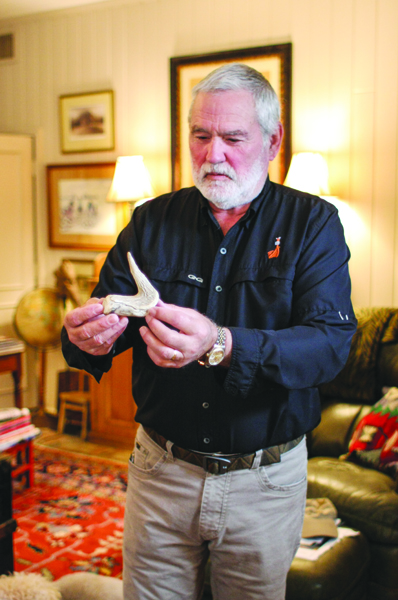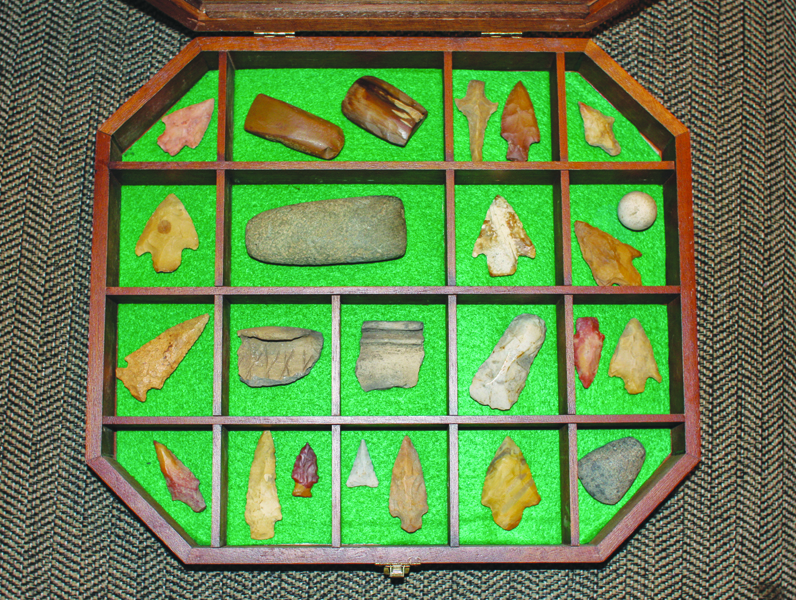Jimmy Goodman’s Indian artifact collection
By Mark H. Stowers
The Bolivar Bullet
The rich Delta soil has blessed generations of family farms with abundant crops. But, mixed in with the cotton, rice, and soybean loving nutrients are many treasures that link us to a rich history. As kids, Jimmy Goodman and his brother Tommy spent countless hours digging up that history, a pastime they still enjoy today.
“We would look for arrowheads and stone implements,” said Jimmy, who is a pharmacist. We’ve found stuff that’s anywhere from 80 to several thousand years old.
Goodman explained that “old Indian mounds are the best place to look and there are fields where people pushed over the mounds in year’s past.”
Though finding one that’s been “pushed over” is all about word of mouth information, when the Goodmans do find a place to “hunt,” it’s usually a day well spent with plenty of walking.
“The best time is early spring, people are in the fields working up the sound and you get a rain,” he explained. “The rain washes the dirt off the piece of rock or stone and it kind of looks like it’s growing out of the ground.”
And, Goodman knows that he’s got to get his spots quickly as there are many relic hunters who enjoy the treasure walking hunt on Delta area turn rows. It’s always best to call ahead to local landowners to get permission before starting your treasure walk through. And, written permission is always best.
“If you get there and see a lot of footprints, it’s best to move on somewhere else,” he said.
Goodman has separated his collection into “good stuff” and “broken stuff.” But, the definition or explanation of how it came to be broken can say according to each relic hunter.
“I’ve got maybe 40 or 50 pieces of good stuff, but I’ve got a lot of broken things,” he said. “We say they were broken by the farming process, but my dad said, that’s crazy. When the Indians were making it back years ago they threw it away and that’s what you are finding.”
Goodman says that it’s not often you find a whole pot other other utensils unless you can dig deeper than the normal relic hunter. But, that takes more time and is frowned upon by landowners.
With their father farming around Lexington, the Goodman boys started finding treasures in a creek bed at the age of seven or so.
“When he was out working we would wade in that creek bed and if you stepped on something sharp you’d reach and pick it up and a lot of times it’d be an arrowhead,” said Goodman.
The pharmacist says he goes out three or four times a year around Greenwood, Satartia and places along the river.






